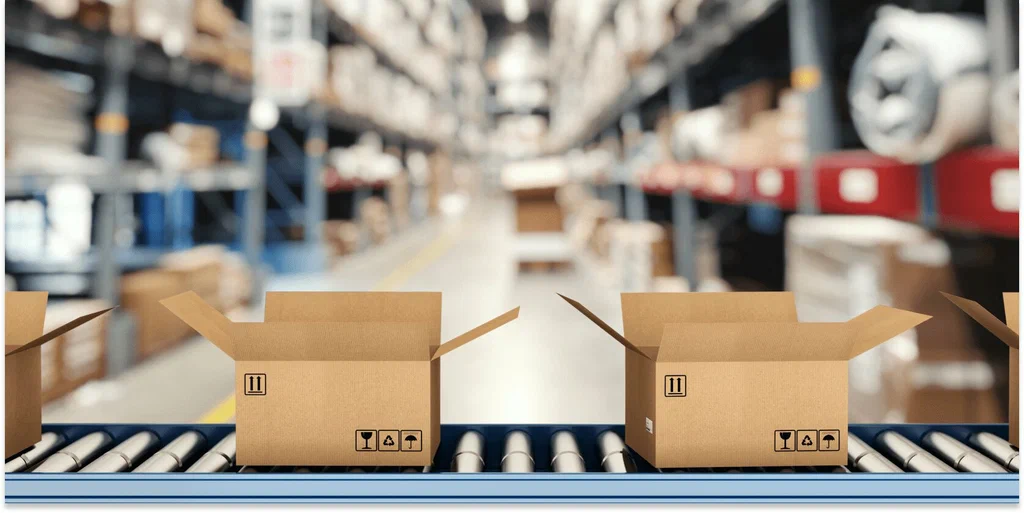Proper storage policies play a crucial role in ensuring the safety and quality of products stored in warehouses licensed by the Saudi Food and Drug Authority (SFDA) in the Kingdom of Saudi Arabia. This helps preserve their characteristics and quality, enhances consumer confidence, and ensures that market needs are met with safe and effective products.
Therefore, the SFDA establishes stringent regulations and standards that warehouses must comply with to ensure the safe storage of products. These regulations include structural, technical, and health requirements aimed at protecting products from contamination and damage. Through continuous monitoring and regular inspections, the SFDA ensures that all licensed warehouses adhere to these standards, contributing to improved public health and consumer protection.
This article aims to review the best storage practices for SFDA warehouses that should be followed in SFDA-licensed warehouses. We will discuss structural and environmental requirements, hygiene and health practices, inventory management, safety and security measures, staff training and compliance, as well as technological innovations.
Understanding SFDA Warehouse Regulations
The warehouse regulations imposed by the Saudi Food and Drug Authority (SFDA) are a vital part of the health system in the Kingdom of Saudi Arabia, aimed at ensuring the safety and quality of stored products. These regulations encompass a range of requirements covering structural, environmental, health, and technical aspects that warehouses must comply with.
Importance of SFDA Regulations
- Ensuring Consumer Safety: By adhering to strict health standards, these regulations help protect consumers from contaminated or spoiled products, thereby reducing the risks of foodborne and drug-related illnesses.
- Maintaining Product Quality: The regulations ensure the presence of advanced systems for temperature and humidity control, which help preserve the quality of food, medical products, and cosmetics during storage. This is a key component of the best storage practices for SFDA warehouses.
- Improving Operational Efficiency: By following the best storage practices for SFDA warehouses and the guidelines stipulated in the regulations, warehouses can enhance their operational processes and ensure efficient inventory management.
- Enhancing Market Confidence: Compliance with SFDA regulations boosts confidence among consumers and suppliers, ensuring that products stored in licensed warehouses meet the highest standards of quality and safety.
Additionally, the regulations impose strict procedures for handling products, including their receipt, inspection, and accurate documentation to ensure traceability and compliance with health standards. By adhering to these best storage practices for SFDA warehouses, businesses can ensure the safe and effective storage of their products, thereby enhancing public health and consumer trust.
The Ultimate Guide of the Best Storage Practices for SFDA Warehouses
SFDA regulations also include requirements related to the structural design of warehouses, the provision of separate storage areas for different products to avoid cross-contamination, the implementation of effective pest control programs, and maintaining a high level of cleanliness. Here are the full details about the best storage practices for SFDA warehouses:
-
Area Designated by Relevant Authorities for Warehouse Establishment
The warehouse location must be in an area designated by the relevant authorities. Cities and governorates that do not have designated areas for warehouses are exempt from this requirement.
-
Building Specifications
The building must be well-insulated for heat and water, well-ventilated, and equipped with water and electricity. The warehouse height should not be less than three meters, and the doors should be tightly sealed. The maximum storage height should not be less than one meter from the warehouse “Ceiling”.
-
Floor Specifications
The warehouse floors should be easy to clean, sealed from the outside, and arranged in locations that equipment cannot reach during movement inside the warehouse.
-
Instructional Signage
There should be no fire source in the warehouse, and clear signage should be placed to prohibit smoking.
-
Dedicated Entry and Warehouse
The warehouse must have one or more entrances dedicated to receiving and delivering products, with clearly marked emergency exits.
-
Electrical Equipment
An automatic backup generator must be available to operate in case of a power outage.
-
Identification Sign
The warehouse identification sign must be visible outside the warehouse, of appropriate size, and include the name, activity, working hours, and phone number of the warehouse.
-
Precautions to Prevent Unauthorized Entry
Necessary precautions must be taken to prevent unauthorized entry into storage areas.
-
Space and Storage
The storage space must be adequate and appropriate, with designated areas for receiving and delivering materials, a separate storage area from the delivery area, a closed quarantine area for damaged or expired products, a designated area for recalled products, and a designated area for storing free samples.
-
Temperature and Humidity
The storage area must be clean, and dry, and have temperature and humidity levels suitable as per the recommendations of the manufacturing companies.
-
Pest Control System
An effective system for pest and rodent control must be in place and regularly reviewed by the quality manager.
-
Storage of Damaged Products
Areas designated for damaged and isolated products must be identified and handled according to written procedures.
-
Electronic System
If no alternative system is available, an electronic system with equivalent security levels for storage must be in place.
-
Temperature and Humidity Measurement Devices
Electronic devices capable of connecting to the authority’s systems for measuring temperature and humidity in storage areas must be available.
-
Storage Equipment
Cooling devices must be equipped with an alarm system that activates when the temperature rises or falls. Storage equipment includes a racking system, an AC system instead of a cooling device, a forklift, jacks, and other handling equipment.
-
Disposal of Damaged Products
Damaged pharmaceutical products must be disposed of regularly through contracting with a specialized company.
-
Recalled Products
Recalled products must be stored in designated areas and monitored for temperature and humidity regularly.
-
Free sample storage Areas
Storage areas for free samples must be equipped with suitable storage conditions and special records.
-
Storage of Hazardous Materials
Hazardous or sensitive materials must be stored in designated areas subject to additional security and safety procedures.
-
Contamination and Interference
Products must be handled in a way that prevents contamination, mixing, or interference between materials.
-
FIFO and FEFO Systems
Products must be sold and distributed according to the FIFO or FEFO systems to ensure they are used in the correct order.
-
Lighting
Sufficient lighting must be provided in storage areas to perform all tasks accurately and safely.
-
Narcotic Drugs and Psychotropic Substances
Narcotic drugs and psychotropic substances must be stored according to specific requirements, including isolation, supervision, and accurate documentation.
-
Temperature and Humidity Records
Temperature and humidity readings and storage records for products must be retained for one year from the expiration date.
-
Periodic Inventory Inspection
Periodic checks of actual inventory quantities must be conducted and compared with recorded quantities to ensure there are no mix-ups or discrepancies.
-
Contracts
All activities related to the distribution, storage, or sale of products must be documented in written contracts with relevant parties.
-
Internal Audit
A quality system must include internal audit processes to ensure compliance with good distribution and storage principles.
By following these best storage practices for SFDA warehouses, licensed warehouses can ensure safe and efficient storage of products, enhancing product quality and safety and boosting consumer confidence.
The Best Storage Practices for SFDA Warehouses by the “3rd Partner”

At Third Partner, we provide state-of-the-art storage solutions to meet your unique needs, and we go beyond simplicity by offering an advanced storage experience.
-
Licensed Warehouses
We offer high-quality rental storage facilities that maintain optimal conditions for your goods, including refrigerated and dry warehouses. Our SFDA-licensed warehouses enhance trust in our storage quality and safety.
-
Flexible Contracts
We understand that business needs can change over time, so we offer flexible storage contracts with no minimum space requirement. This allows your business to easily adapt to changes in production and demand, maximizing your storage investments.
-
Versatile Storage Spaces
Providing storage spaces designed for a wide range of products is a core part of our service. You can rely on efficient storage for pharmaceuticals, medical supplies, cosmetics, health products, herbal products, dry and refrigerated food items, as well as animal feed and feed additives.
-
Commitment to Quality and Safety
Our warehouses are equipped with the latest security technologies in compliance with SFDA regulations, ensuring the safety of your goods. Our team has extensive experience in logistics storage, and we are committed to providing the best storage practices for SFDA warehouses in KSA.
In Conclusion,
After discussing all the details about the best storage practices, it becomes clear that the best storage practices for SFDA warehouses in the Kingdom of Saudi Arabia play a crucial role in ensuring the safety and quality of stored products. By adhering to structural, health, and technical requirements, companies can achieve the highest standards of safety and quality, enhancing consumer trust and maintaining product integrity.
By following these practices, warehouses can improve their operational efficiency and ensure an optimal storage environment for various products. We encourage all companies to adhere to these standards to achieve the best results in their storage operations. You can contact the “3rd Partner“ team for consultation and start benefiting from our storage services.
Additionally, it is vital to stay updated with any changes or updates in the SFDA regulations to maintain compliance and continually improve storage practices. This proactive approach will not only ensure the safety and quality of the stored products but also foster a culture of excellence and reliability within the organization.
Your Partner in Quality and Compliance
Are you seeking a reliable logistics partner that prioritizes the integrity of your delicate products? Look no further than 3rd partner. Our specialized services are designed to meet the stringent requirements of the Food and Drug Authority, ensuring that your goods are handled with the utmost care. From receiving and storage to processing, packaging, and shipping, we offer a seamless end-to-end solution. Experience the difference with our commitment to quality, compliance, and customer satisfaction.
- Storage Service
- Licensed Warehouse Service
- Inventory and Order Management Service
- Transportation and Distribution Service
- NUPCO Supplies Service
- Linking Service with the ‘RSD’ Platform
- Storage Service for E-commerce Stores
- Inventory and Order Management Service
- Shipping and Cash on Delivery Service
- Returns and Compensation Management Service












